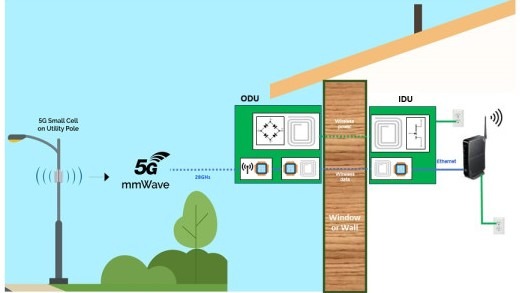GaN-Based Wireless Power Transfer for 5G Applications
This article by Maurizio Di Paolo Emilio was published in full 3/31/21 on Power Electronics News. Read the full, unabridged article here.
5G supports large amounts of data, significantly reduces latency, and provides increasing bandwidth coverage to support the internet of things as it becomes even more massive.
5G is the latest-generation network that is poised to power the IoT. Networks running 5G will be up to 20× faster than the existing 4G network, enabling video download speeds up to 10× faster. High-performance power semiconductors such as gallium nitride (GaN), silicon carbide (SiC), and gallium arsenide (GaAs) are playing a key role in 5G radio-frequency (RF) solutions, wireless power transfer (WPT), and base-station power supplies. To meet power requirements, OEMs are turning to GaN in particular. A GaN-based power system can offer a good option to support the stringent demands of data transmission and energy efficiency requirements.
How good 5G coverage is depends on many elements, including the surrounding environment. The 5G signal can be interrupted by walls, water towers, and other barriers to RF propagation. The maturation of technology supported by wide-bandgap semiconductors, IoT, and wireless charging will work together to create more technological innovation for 5G infrastructure.
GaN technology
The main advantage of GaN is its higher power density compared with silicon. This is due to a gap between the conduction and valence bands that is higher than in LDMOS technologies, thus providing higher breakdown voltages. High power density allows the signal to be transferred over large distances, extending the coverage area of base stations. It also enables smaller form factors that require less space on the PCB. Designers can therefore have more power in a smaller space, in turn reducing costs.
The high-density characteristic allows the power amplifiers (PAs) used in 5G to work at high temperatures, thus reducing the use of heatsinks. The efficiency of GaN minimizes network power consumption while reducing the energy required for power-hungry massive MIMO systems. This increased efficiency — combined with the ability to achieve operating frequencies of up to 100 GHz, low parasitic capacitance (compared with LDMOS), and scalability in terms of loads and output power — provides GaN devices with a natural match for broadband systems.
5G and power management
To meet the needs of lower power consumption, smaller form factors, and better performance in terms of thermal management, RF power amplifiers based on GaAs, GaN, and SiC technologies started to set the pace during the advent of 4G. GaN is expected to become mainstream in the market for its improved power performance. GaN continues its race to gain market share, solving the many technical challenges that the market requires by bridging the gap with other, much older, silicon-based technologies.
Magnetic-resonance–based WPT technologies such as AirFuel1 have emerged in recent years on the strength of their high operating frequency (6.78 MHz) and ability to offer location flexibility, large separation distance, and multi-device–charging capabilities. The wireless technology is well-known, but the design of transmitters, their location, the possibility of maximizing efficiency, and validating the behavior of the entire system represent complex challenges that require the use of complex engineering solutions.
The advent of 5G networks will see the use of millimeter-wave frequencies with large bandwidth. In fixed wireless access (FWA) applications, the external network unit needs power from the internal power line and adapters. Instead of wired solutions, a WPT system can be used for power transfer for the external network unit and also be used for 5G micro base stations and IoT devices such as IP cameras and optical network terminals (fiber-to-home).
Read the rest of the full, unabridged article here.

Figure 1: GaN Systems’ WPT system for 5G FWA outdoor-unit charging applications


